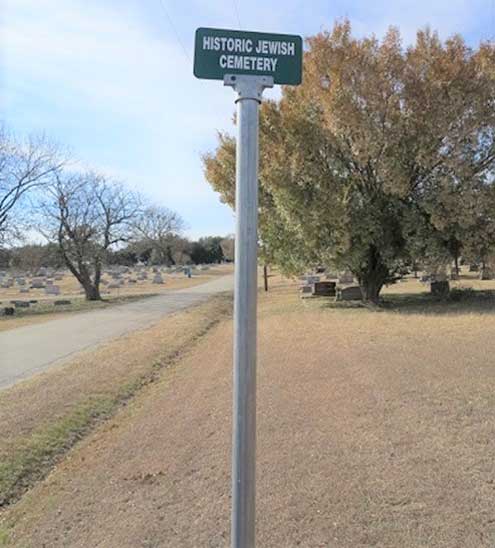The 23rd in a series of articles
for the 175th Anniversary of Bonham
Bonham, Texas -- This article discusses the cemeteries in Bonham which have provided a final resting place for its citizens.
Inglish Cemetery
The town’s oldest cemetery is on property donated by Bailey Inglish. Pioneers buried there include the Daugherty’s, victims of an 1838 Indian massacre, Bailey Inglish (1783-1867), Daniel Rowlett (1786-1848) and Texas Revolution veteran James Tarleton (1789-1861). Judge J. P. Simpson in his A History of Fannin County states that the Daugherty’s were the second burials in the cemetery.

One outstanding monument at the cemetery is that of Bailey Inglish, the back of which shows Fort Inglish and a pioneer wagon.

Our records and research identify 559 burials at this cemetery, of which 426 individuals have markers. There are undoubtedly more without markers or records. This cemetery is now managed by the City of Bonham. No new plots are sold, but families which already have plots can use them. Recently City of Bonham departments, organized by Mark Posey, did significant cleanup work at the cemetery.
Pace Cemetery
The Pace Cemetery was located east of the Texas & Pacific Railroad Depot. It is not known when burials began there, but an 1869 newspaper article announces a
cleanup day for the cemetery.

An article in the Honey Grove Signal in 1895 said:
Perhaps everybody don't know that Fannin County owns the old cemetery near the depot, where for over a quarter of a century, Bonham laid her dead to rest. In early days it was a quiet, beautiful place - covered with a beautiful grove of trees. But time rolled on, the railroad came, and almost encroached on a part of the sacred ground. The city began to improve, houses spring up all around in the vicinity, and as burials continued there, the city council was appealed to by the citizens, asking them to stop burying there, as it had become a nuisance and was detrimental to the health of the living. The city council passed an ordinance forbidding any more burials there, consequently Willow Wild sprang into existence, and many of the old settlers' remains were disentombed and moved from the old cemetery near the depot to Willow Wild.
In 1902 the Bonham News reported that during grading work on First Street the bones of 34 persons were found and removed, with no way to identify the individuals.
In 1930 the former cemetery was “cleaned off” and made into a park. This photo is the only one that has been found so far.

County offices now occupy the location of the former Pace Cemetery.
Willow Wild
Willow Wild was established in 1878. It stretches across 90 acres. Maintenance and operations are provided by the Willow Wild Cemetery Association, Inc.
Willow Wild relies on donations and community volunteers for care and maintenance. Sam Rayburn is the most famous historical figure to be buried at Willow Wild.

Our records and research identify over 10,100 burials at this cemetery, of which 8,243 individuals have markers. There are undoubtedly more without markers or
records.
Jewish Cemetery (Rosenbaum Cemetery)
In 1884 one acre was purchased by M. Rosenbaum, president of the Hebrew Benevolent Society of Bonham, for the burial of Jewish residents. This cemetery is now a part of Willow Wild with burials between 1881 – 1925.

Our records and research identify 11 burials of which 10 have markers.
Gates Hill Cemetery
Gates Hill Cemetery is the main African American cemetery for Bonham. It is located at the south end of town on Highway 78 south. It is unknown how early this cemetery was used but most likely from the 1850s.
Our records and research identify 1216 burials of which 386 have markers. There are undoubtedly more without markers or records.

Bonham citizens are buried in many of the other over 175 cemeteries in the County. The Russell Family Cemetery is now located in Bonham, but was once a rural family cemetery. It has 28 burials and 21 stones.